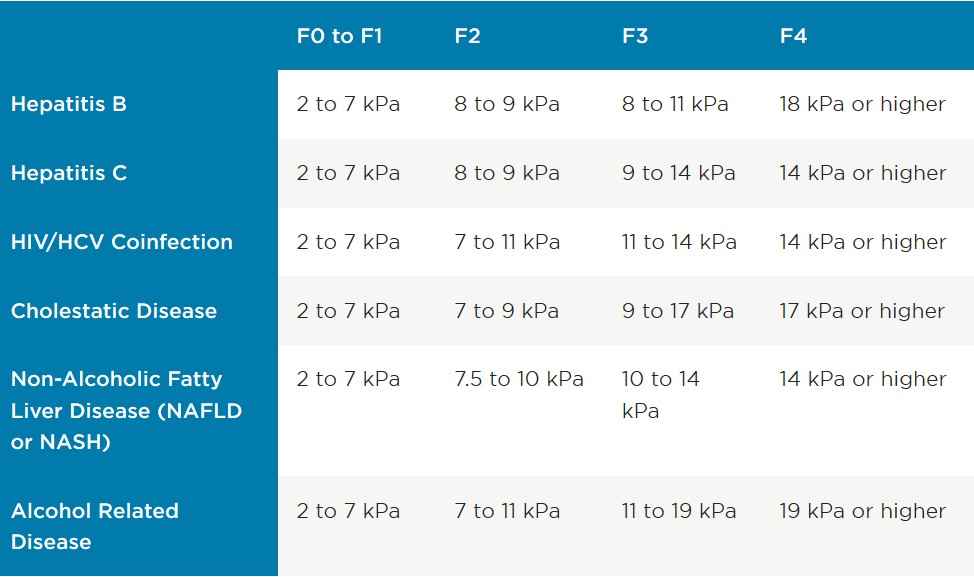Understanding Your FIBROSCAN Results
What is a FIBROSCAN™?
A FibroScan is a non-invasive, painless test using an ultrasound machine that measures the health of your liver. It measures your liver’s elasticity (stiffing/scarring) and steatosis (fatty change). Fatty change is when fat builds up in your liver cells.
The FibroScan will help your Greater Boston GI provider learn more about your liver disease. This test can be used alongside other tests, such as blood tests, imaging scans, or biopsies, that measure your fatty liver change.
Your Greater Boston GI provider will review your results and post them on the Greater Boston GI Portal for you to review. If you prefer a printed copy of the results by mail, please let the office know.
The information below describes the FibroScan results in more detail, including how your Greater Boston GI provider uses your results to determine your steatosis grade and fibrosis score.
About Your CAP Score
Your CAP score is a measurement of fatty change in your liver. Your Greater Boston GI provider will use your CAP score to get your steatosis grade. A CAP score is measured in decibels per meter (dB/m). It ranges from 100 to 400 dB/m. The table below shows ranges of CAP scores and the matching steatosis grade and amount of liver with fatty change.
About Your Fibrosis Result
Your fibrosis result is a measurement of the amount of scarring in your liver. A FibroScan measures elasticity by measuring the stiffness/scarring of your liver.
The fibrosis result is measured in kilopascals (kPa) Normal results are seen between 2 and 6 kPa. The highest possible result is 75 kPa. Many people with liver disease(s) have a result that’s higher than the normal range.
Your Greater Boston GI provider will use your FibroScan fibrosis result and your medical history to determine your fibrosis score.
- Fibrosis score F0 to F1: No liver scarring or mild liver scarring.
- Fibrosis score F2: Moderate liver scarring.
- Fibrosis score F3: Severe liver scarring.
- Fibrosis score F4: Advanced liver scarring (cirrhosis).
Patients with stage F2 or higher fibrosis are at a significantly higher risk for liver‐related complications and death.
Using your FibroScan fibrosis result to estimate your fibrosis score
The table below shows liver diseases, ranges of fibrosis results, and the matching fibrosis score. The ranges of fibrosis results are estimates. Meaning that your actual fibrosis score (the score that your Greater Boston GI provider tells you) may not match the fibrosis score in the table. If you have more than one liver disease, you may not be able to use the table.
To use the table, find the liver disease that you have on the left side of the table. Read across the row from left to right until you find the range that includes your fibrosis result. Then, look at the top of that column to see the fibrosis score.
Your fibrosis result may be over-estimated (your liver may have less scarring than what your fibrosis result says) if you have:
- Liver inflammation which can be caused by a recent liver illness or drinking alcohol.
- Benign (not cancerous) or cancerous tumors in your liver.
- Liver congestion (when your liver is too full of blood or other fluids). This is usually caused by heart failure.
Your FibroScan results may also be less accurate if you have:
- Obesity
- A build-up of fluid in your abdomen (ascites).
- Too little bile flowing out of your liver (biliary obstruction).


